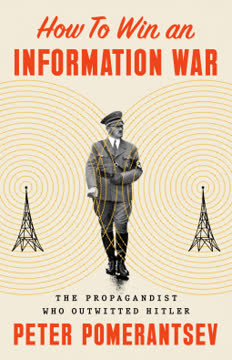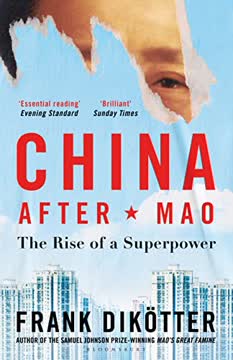Key Takeaways
1. Dictators' Cults: A Paradox of Manufactured Consent and Fear
The paradox of the modern dictator is that he has to manufacture the illusion of popular support.
Beyond brute force. While violence and terror are foundational to dictatorial rule, they are rarely sufficient for long-term stability. Dictators understand that naked power has a shelf life; it must be cloaked in the guise of popular will. This necessitates the creation of a "cult of personality," a carefully constructed facade of widespread adoration that masks the underlying coercion.
A strategic tool. The cult of personality serves as a powerful psychological weapon. It aims to instill fear, destroy common sense, enforce obedience, and isolate individuals by making everyone a liar. When everyone is compelled to praise the leader, it becomes impossible to discern genuine dissent, making alliances and coups exceedingly difficult to organize.
Architects of their own myth. Dictators are not merely passive recipients of adulation; they are the primary architects of their own cults. From meticulously staging public appearances to personally editing propaganda, they exert granular control over every aspect of their public image. This self-glorification is a core decision, driven by their inherent insecurity and desire for absolute, unquestioned authority.
2. From Obscurity to Infallibility: The Dictator's Image Transformation
He was the man chosen by God to execute his will.
Humble beginnings, grand destiny. Many dictators, like Mussolini, Hitler, and Ceauşescu, started from unremarkable or even disadvantaged backgrounds. Their cults often began by transforming these humble origins into a narrative of a divinely chosen individual, destined to save the nation. This narrative positioned them as unique figures, rising against all odds through sheer will and genius.
The messianic narrative. This transformation often involved portraying the leader as a messianic figure, a "savior" or "redeemer" who alone could guide the nation through crisis. Propaganda machines worked tirelessly to imbue them with superhuman qualities, presenting them as infallible, omniscient, and indispensable. This elevated status made questioning their authority akin to questioning fate itself.
Symbolic rebirth. The process of image transformation was a continuous effort, involving a symbolic "rebirth" of the leader. For instance, Mussolini's "March on Rome" was largely a manufactured event, and Hitler's "Beer Hall Putsch" failure was reframed as a martyrdom. These events were then mythologized to cement their heroic status and justify their ascent to absolute power.
3. Propaganda and Control: The Pillars of Personality Cults
The entire country was transformed into a stage for a meticulously rehearsed performance.
Total information control. Dictators understand that controlling information is paramount. They swiftly suppress free speech, censor media, and rewrite history to align with their preferred narrative. Every newspaper, radio broadcast, and film is repurposed to disseminate the leader's message and glorify their achievements, creating an echo chamber of praise.
Ubiquitous presence. Modern technology allowed dictators to achieve an unprecedented level of omnipresence. From giant billboards and building-sized portraits to mandatory radio broadcasts and films, the leader's image and voice saturated every aspect of public life. This constant exposure aimed to normalize their absolute authority and make their presence feel inescapable.
Indoctrination from birth. The cult extended into every social institution, particularly education. Children were indoctrinated from a young age, learning to revere the leader through textbooks, songs, and daily rituals. Schools became training grounds for loyalty, ensuring that future generations would unquestioningly accept the dictator's infallibility and the party's absolute rule.
4. The Human Touch: Crafting an Accessible Yet Divine Image
He was a man of simple habits, living in a loess cave and growing his own tobacco.
Relatability as a tactic. Despite their divine portrayal, many dictators cultivated an image of accessibility and humility. Mussolini was depicted as a tireless worker, always available to his people. Stalin was presented as a quiet, unassuming figure, a "humble servant" of the party. Mao lived simply in a cave, and Duvalier was "Papa Doc," the caring village doctor.
Charming the elite. Dictators also actively charmed foreign intellectuals, journalists, and politicians. They understood that external validation could legitimize their rule and silence domestic critics. These influential visitors, often eager to believe in a "better society," were carefully managed and presented with a curated reality, leading them to publish glowing accounts that further bolstered the dictator's image.
The "Father of the People" archetype. This humanizing aspect often culminated in the "Father of the People" archetype. Stalin became "batiushka," the caring "little father" of the nation. Kim Il-sung was the "fatherly leader" guiding his people. This paternal image fostered a sense of dependence and loyalty, making it harder for citizens to conceive of a world without their benevolent guide.
5. Eliminating Rivals: The Ruthless Consolidation of Power
The cult of personality served to dwarf allies and enemies alike, forcing them to work together under the dictator’s thumb.
Internal purges. Dictators often rise to power by eliminating or marginalizing rivals within their own ranks. Stalin's "Great Terror" and Mao's Rectification Movement systematically purged perceived threats, ensuring that only the most loyal and subservient individuals remained. This created a climate of intense fear and competition, where flattery became a survival mechanism.
Divide and conquer. Leaders like Hitler and Ceauşescu actively fostered competition among their subordinates, preventing anyone from building an independent power base. By constantly reshuffling positions and encouraging infighting, they ensured that all real power remained centralized in their hands, making them the ultimate arbiters of disputes.
Loyalty above competence. The relentless demand for absolute loyalty often meant that competence was sacrificed for subservience. Dictators surrounded themselves with sycophants and opportunists who would never challenge their decisions, no matter how flawed. This created a self-reinforcing loop where the leader's delusions of grandeur went unchecked, leading to increasingly disastrous outcomes.
6. Economic Ruin: The Cost of Ideological Purity and Grandeur
The more the people suffered, the more extravagant the cult of Ceauşescu became.
Grandiose visions, devastating reality. Dictators often embarked on ambitious economic projects, driven by ideological purity or a desire for self-sufficiency. Mussolini's "Battles" for grain and lira, Hitler's Four-Year Plan, Stalin's Five-Year Plans, Mao's Great Leap Forward, and Ceauşescu's systematization all aimed to transform their nations rapidly. However, these top-down, often irrational, plans consistently led to:
- Widespread shortages
- Famine
- Economic collapse
- Massive human suffering
Sacrifice for the cult. Resources that could have alleviated poverty or improved living standards were instead diverted to fuel the cult of personality. The construction of monumental buildings, statues, and propaganda materials consumed vast national wealth. For example:
- Ceauşescu's Palace of the People consumed a third of Romania's national budget.
- Mengistu's 10th-anniversary celebrations cost millions while millions starved.
The "sacrifice" narrative. Propaganda framed these hardships as necessary sacrifices for a glorious future, or as the result of external enemies. The leader, meanwhile, was portrayed as tirelessly working for the people's welfare, often unaware of the true suffering. This narrative deflected blame from the dictator and reinforced their image as a benevolent, if distant, figure.
7. The Illusion of Omniscience: Isolation and Disastrous Decisions
He was trapped in his own worldview, a slave to his own myth.
Self-imposed isolation. As their cults grew, dictators became increasingly isolated from reality. Surrounded by sycophants who dared not deliver bad news, they lost touch with the true state of their nations. This isolation fostered an unshakeable belief in their own infallibility, leading them to make critical decisions based on intuition rather than accurate information.
Unchecked power, fatal errors. With no checks and balances, and no trusted advisors to offer dissenting opinions, dictators made unilateral decisions with devastating consequences. Hitler's interference in military strategy, Mao's disastrous Great Leap Forward, and Mussolini's overestimation of his military strength are prime examples of how unchecked power led to catastrophic misjudgments.
Paranoia and distrust. The very insecurity that fueled their cults also led to extreme paranoia. Dictators constantly suspected betrayal, even from their closest allies. This pervasive distrust meant they had no true friends or reliable partners, further entrenching their isolation and making them vulnerable to their own flawed judgment.
8. The Fragility of Power: Cults Shatter When Fear Evaporates
When fear evaporated, the entire edifice collapsed.
Instantaneous collapse. Despite their seemingly unshakeable power, personality cults proved remarkably fragile. When the underlying fear that compelled outward conformity dissipated, the entire edifice of adoration could crumble almost instantly. The fall of the Berlin Wall, the execution of Ceauşescu, and the flight of Mengistu all demonstrated how quickly these seemingly invincible cults could vanish.
Public catharsis. The immediate aftermath of a dictator's fall often saw a public outpouring of long-suppressed resentment. Statues were toppled, portraits defaced, and symbols of the regime were destroyed. This cathartic rejection revealed the true nature of the "popular support" – a performance driven by terror, not genuine affection.
The enduring legacy of control. While the overt cults may disappear, the mechanisms of control often leave a lasting impact. In some cases, like North Korea, the cult is successfully passed down through generations. In others, like China, the party learns from past mistakes, banning "personal cults" while still maintaining tight control over information and dissent, demonstrating that the lessons of manufactured consent can be adapted for new eras.
Last updated:
Review Summary
How to Be a Dictator explores the cult of personality surrounding eight 20th-century dictators. Readers found it informative and fascinating, praising its accessible writing and intriguing facts. Some felt it lacked depth or new insights for those already familiar with the subject. The book's focus on personality cults and their role in maintaining power was appreciated. While some desired more analysis or coverage of additional dictators, many recommended it as an engaging introduction to the topic, particularly for those interested in 20th-century history and politics.
Similar Books
Download PDF
Download EPUB
.epub digital book format is ideal for reading ebooks on phones, tablets, and e-readers.









